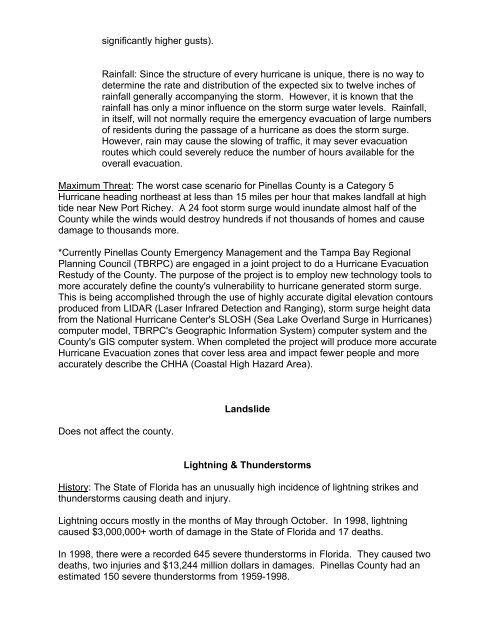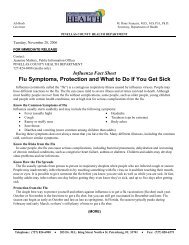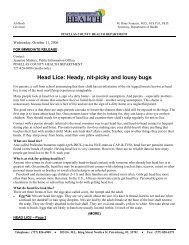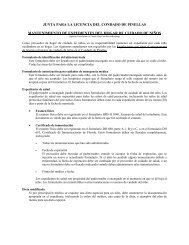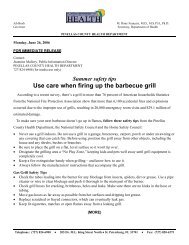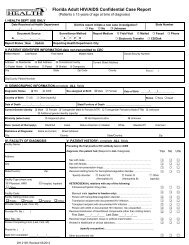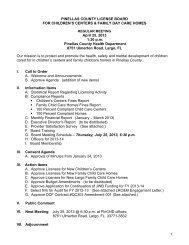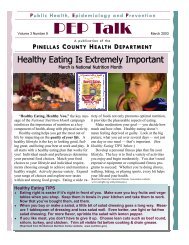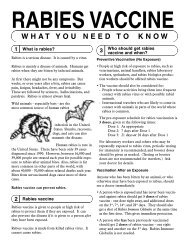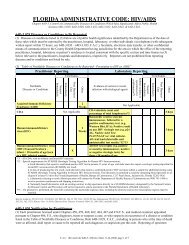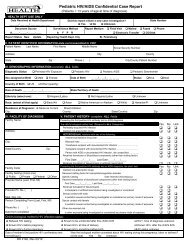Pinellas County Hazard Identification and Vulnerability Assessment
Pinellas County Hazard Identification and Vulnerability Assessment
Pinellas County Hazard Identification and Vulnerability Assessment
Create successful ePaper yourself
Turn your PDF publications into a flip-book with our unique Google optimized e-Paper software.
significantly higher gusts).<br />
Rainfall: Since the structure of every hurricane is unique, there is no way to<br />
determine the rate <strong>and</strong> distribution of the expected six to twelve inches of<br />
rainfall generally accompanying the storm. However, it is known that the<br />
rainfall has only a minor influence on the storm surge water levels. Rainfall,<br />
in itself, will not normally require the emergency evacuation of large numbers<br />
of residents during the passage of a hurricane as does the storm surge.<br />
However, rain may cause the slowing of traffic, it may sever evacuation<br />
routes which could severely reduce the number of hours available for the<br />
overall evacuation.<br />
Maximum Threat: The worst case scenario for <strong>Pinellas</strong> <strong>County</strong> is a Category 5<br />
Hurricane heading northeast at less than 15 miles per hour that makes l<strong>and</strong>fall at high<br />
tide near New Port Richey. A 24 foot storm surge would inundate almost half of the<br />
<strong>County</strong> while the winds would destroy hundreds if not thous<strong>and</strong>s of homes <strong>and</strong> cause<br />
damage to thous<strong>and</strong>s more.<br />
*Currently <strong>Pinellas</strong> <strong>County</strong> Emergency Management <strong>and</strong> the Tampa Bay Regional<br />
Planning Council (TBRPC) are engaged in a joint project to do a Hurricane Evacuation<br />
Restudy of the <strong>County</strong>. The purpose of the project is to employ new technology tools to<br />
more accurately define the county's vulnerability to hurricane generated storm surge.<br />
This is being accomplished through the use of highly accurate digital elevation contours<br />
produced from LIDAR (Laser Infrared Detection <strong>and</strong> Ranging), storm surge height data<br />
from the National Hurricane Center's SLOSH (Sea Lake Overl<strong>and</strong> Surge in Hurricanes)<br />
computer model, TBRPC's Geographic Information System) computer system <strong>and</strong> the<br />
<strong>County</strong>'s GIS computer system. When completed the project will produce more accurate<br />
Hurricane Evacuation zones that cover less area <strong>and</strong> impact fewer people <strong>and</strong> more<br />
accurately describe the CHHA (Coastal High <strong>Hazard</strong> Area).<br />
Does not affect the county.<br />
L<strong>and</strong>slide<br />
Lightning & Thunderstorms<br />
History: The State of Florida has an unusually high incidence of lightning strikes <strong>and</strong><br />
thunderstorms causing death <strong>and</strong> injury.<br />
Lightning occurs mostly in the months of May through October. In 1998, lightning<br />
caused $3,000,000+ worth of damage in the State of Florida <strong>and</strong> 17 deaths.<br />
In 1998, there were a recorded 645 severe thunderstorms in Florida. They caused two<br />
deaths, two injuries <strong>and</strong> $13,244 million dollars in damages. <strong>Pinellas</strong> <strong>County</strong> had an<br />
estimated 150 severe thunderstorms from 1959-1998.


